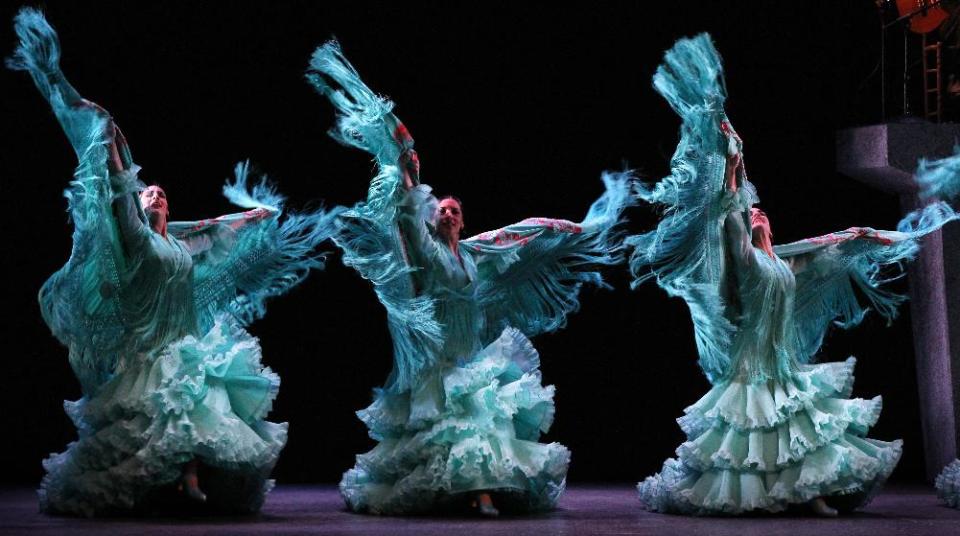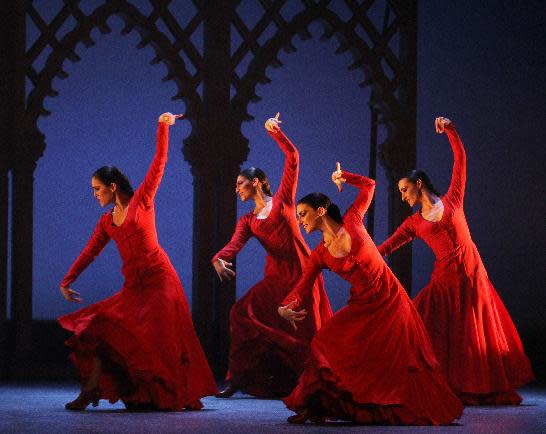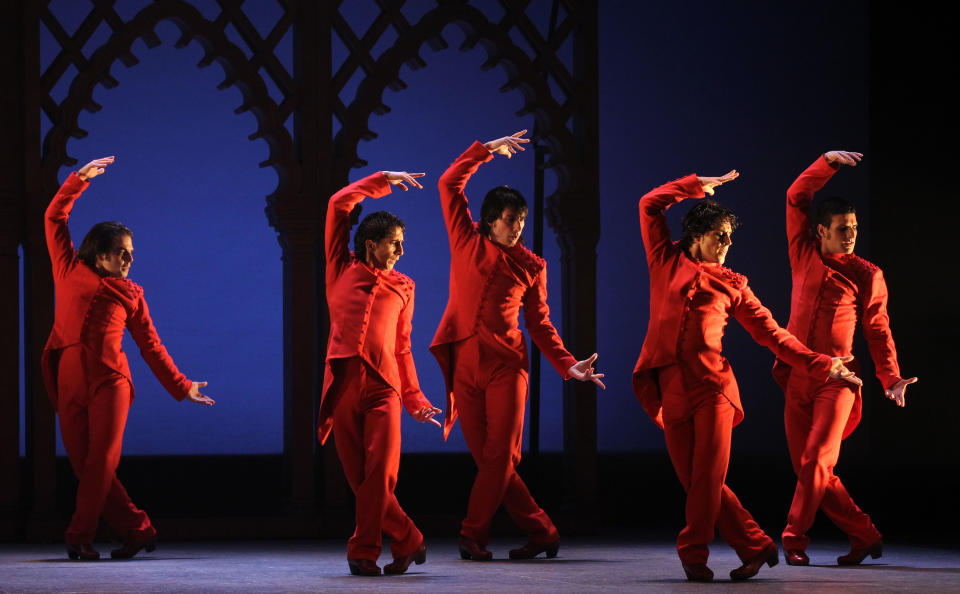Spanish troupe offers flamenco in all its facets
NEW YORK (AP) — In dance, as in many art forms, sometimes simplest is best.
That's certainly how it felt watching the Ballet Flamenco de Andalucia perform "Metafora" at New York City Center on Wednesday evening, beginning a four-day engagement there.
At the curtain call, flamenco singer Juana Salazar came out for a little encore, singing alone and dancing a bit, too, as her fellow performers clapped and encouraged her. It was an infectiously fun moment, and the audience, standing in the aisles on its way out, clapped along.
The rest of the evening, an ambitious two-act production choreographed by flamenco star Ruben Olmo, was a sometimes rewarding, sometimes perplexing mix of effects.
Again, the best moments seemed to be the simplest: A single dancer, like the wildly passionate Pastora Galvan or the intense and lovely Rocio Molina, both guest artists with the company, performing to live music from the expert flamenco musicians onstage. Or a pair of male dancers all in black, dueling with their feet.
It was in the second act that the evening seemed to meander. This part of the show, a foray into different types of flamenco and different musical styles, was meant to show how the art form evolves and stays relevant, even while holding true to its celebrated past.
But while the dancing was often beautiful, it was hard to put one's finger on precisely what one was seeing, and what it meant. (The program notes didn't help a lot to clarify, especially when referring to, for example, "the intellectual idol of a neuron.")
Flamenco comes to City Center this time each year, and it's always a pleasure to sample a new troupe or celebrated artist. This year, the sole group performing is the Andalucia troupe, a 17-year-old company that has launched the careers of some well-known dancers.
In the first act, which was a set of more traditional dances accompanied by the onstage band, the audience reserved its loudest cheers for Galvan, whose highly emotional interpretation included frequent shouts and a few bumps and grinds. She began in bright orange, energetically navigating a huge fringed shawl and then a long ruffled train. She came back in a purple-fringed dress, minus the train.
The second act began with Olmo dancing alone, his long and wiry body showing its ballet training by veering easily from flamenco moves to arabesques or pirouettes. The entire cast then came on to perform a set of bigger numbers, evoking different styles of flamenco.
It was, though, smaller moments like that male duo in black, dueling with elegantly stomping feet, that were most gratifying. Or the hearty cries of a flamenco singer like Salazar or Cristian Guerrero, to lovely strains of guitar. Even for non-Spanish speakers in the audience, the passion came through loud and clear.
___
Online: http://www.nycitycenter.org



